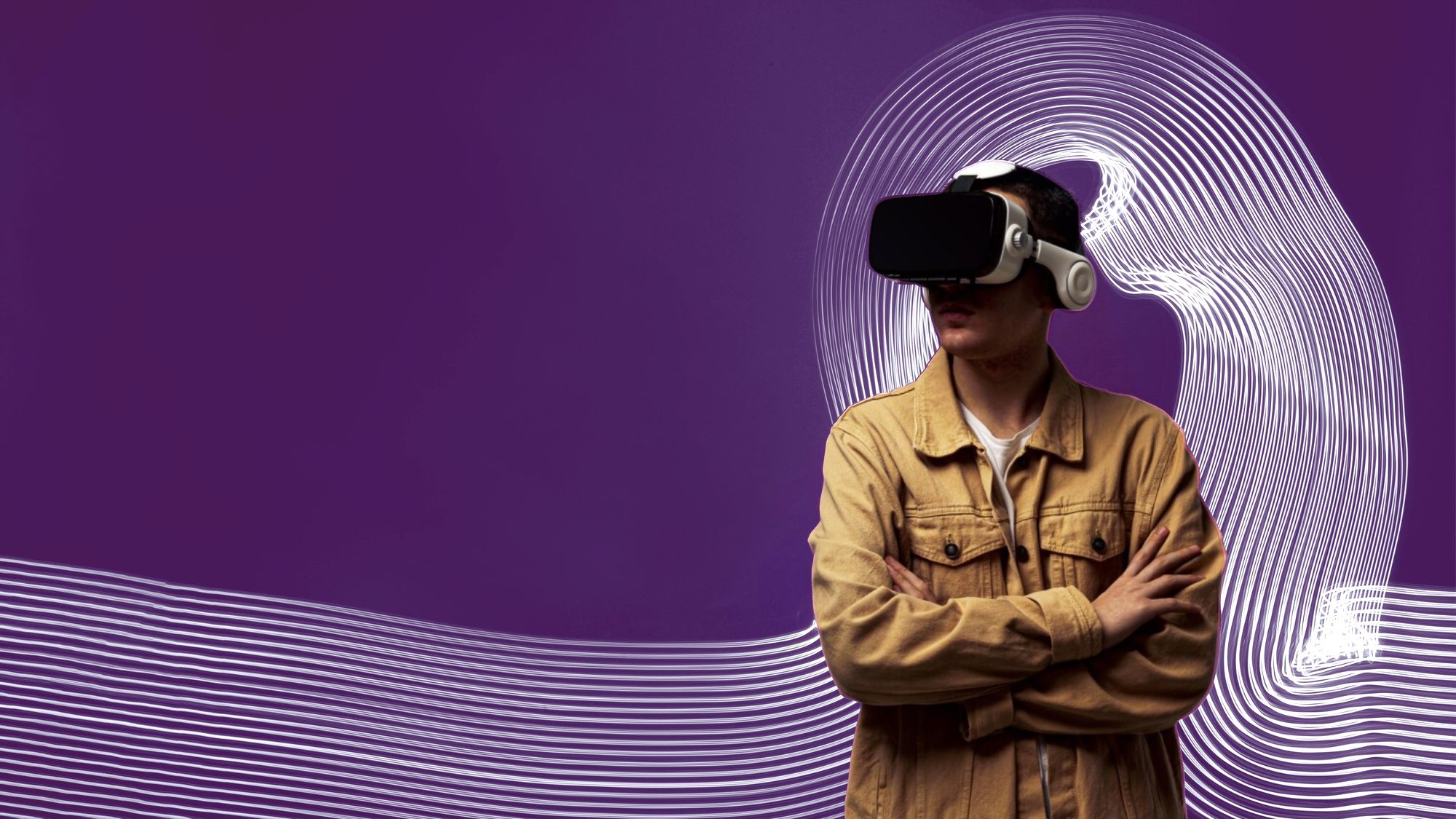Virtual reality and augmented reality have greatly enhanced immersive learning experiences. These technologies provide users with a realistic and interactive environment for learning, resulting in improved retention and engagement.
Virtual reality (vr) is a computer-generated simulation that immerses users in a virtual environment, while augmented reality (ar) overlays digital content onto the real world. The impact of these technologies on education and training is significant, as they enable learners to actively participate in their learning process and explore concepts in a three-dimensional space.
By creating a sense of presence and offering hands-on experiences, vr and ar promote deeper understanding and long-term memory retention. These immersive learning experiences can be utilized in various fields, such as medical training, engineering simulations, language learning, and even historical recreations. As technology continues to advance, vr and ar hold immense potential in revolutionizing the way we learn.

Credit: www.msrcosmos.com
Introduction: The Power Of Immersive Learning
Immersive learning is transforming the world of education. The power of virtual reality (vr) and augmented reality (ar) is revolutionizing the way we learn, bringing education to life in ways we never thought possible. With vr, students can explore ancient civilizations, dive deep into the ocean, or even travel to outer space without leaving the classroom.
Ar allows learners to interact with digital objects and information overlaid onto the real world, enhancing their understanding and engagement. In this blog post, we will explore the definition and benefits of immersive learning, and the importance of vr and ar in education.
Definition And Brief Overview Of Immersive Learning:
- Immersive learning refers to the use of technology, such as vr and ar, to create simulated environments that provide learners with realistic and interactive experiences.
- It goes beyond traditional classroom methods by actively engaging students and stimulating their senses, promoting active learning.
- By creating a sense of presence and immersion, immersive learning fosters deeper understanding, retention, and application of knowledge.
- Immersive learning environments can be fully virtual (vr), where users are completely immersed in a digital world, or augmented (ar), where digital elements are overlaid onto the real world.
Importance And Benefits Of Virtual And Augmented Reality In Education:
- Vr and ar provide visual and interactive experiences that captivate students’ attention and create a high level of engagement.
- They enable experiential learning, allowing students to actively participate and explore concepts in a hands-on manner.
- Immersive learning experiences enhance motivation and enthusiasm, as students are excited to explore new worlds and scenarios.
- Vr and ar help bridge the gap between theory and practice, enabling students to apply their knowledge in realistic and practical contexts.
- They promote collaboration and social interaction, as students can engage in shared virtual experiences and collaborate on complex projects.
- Immersive learning can accommodate different learning styles, catering to visual, auditory, and kinesthetic learners.
- The use of vr and ar in education has been shown to increase knowledge retention and improve learning outcomes.
- Immersive learning environments promote critical thinking, problem-solving, and creativity by presenting students with realistic challenges and scenarios.
Vr and ar have the potential to revolutionize education by providing immersive and engaging learning experiences. They offer a new dimension to traditional teaching methods, enhancing student engagement, motivation, and learning outcomes. In the following sections of this blog post, we will delve deeper into the various applications of vr and ar in different educational settings, exploring their impact on specific subjects and disciplines.
So, let’s embark on this exciting journey and discover the transformative power of immersive learning with vr and ar.
The Ultimate Transformation: Unleashing Immersive Learning With Virtual And Augmented Reality
Virtual and augmented reality (vr/ar) technologies have revolutionized the world of education, transforming traditional learning into immersive and captivating experiences. The impact of these cutting-edge technologies on immersive learning is unparalleled, offering students new and exciting ways to engage with educational content.
Let’s explore the ultimate transformation these technologies bring to the table when it comes to unleashing immersive learning.
Supplementing Textbook Learning With Virtual And Augmented Reality:
- Allows students to visualize complex concepts and theories in a three-dimensional space.
- Provides a hands-on approach to learning, making abstract concepts more tangible and understandable.
Creating Interactive And Engaging Lessons:
- Incorporates interactive elements such as quizzes, puzzles, and games to make learning more enjoyable and interactive.
- Encourages active participation and fosters a deeper understanding of the subject matter.
Integrating Virtual Field Trips And Simulations:
- Transports students to places they may never be able to visit in the real world, giving them a firsthand experience.
- Allows students to explore historical sites, natural wonders, and cultural landmarks virtually, enhancing their knowledge and appreciation.
Hands-On Experiments And Lab Simulations:
- Enables students to conduct virtual experiments and simulations, reducing the need for physical resources and equipment.
- Provides a safe environment for students to explore scientific concepts and develop practical skills.
Visualizing Complex Concepts In Science, Technology, Engineering, And Mathematics (Stem):
- Presents abstract and complex stem concepts in a visually appealing and engaging manner.
- Enhances comprehension and retention of knowledge, particularly in subjects that require spatial understanding.
Encouraging Problem-Solving And Critical Thinking Skills:
- Engages students in immersive scenarios that require them to think critically and solve problems.
- Develops analytical skills and the ability to apply theoretical knowledge in practical situations.
Immersive Language Immersion Experiences:
- Allows learners to practice language skills through realistic scenarios and interactions.
- Provides a safe and judgment-free environment to build confidence and fluency.
Practicing Real-Life Communication Scenarios:
- Offers opportunities for students to simulate real-life communication scenarios, such as job interviews or public speaking engagements.
- Helps students develop effective communication skills and overcome social anxiety.
Enhancing Cultural Understanding And Empathy:
- Enables students to experience different cultures, perspectives, and realities firsthand.
- Fosters empathy and promotes understanding of diverse cultures and backgrounds.
Immersive Simulations For Professional Training:
- Provides realistic training experiences for professionals in various industries, such as healthcare, aviation, and military.
- Enhances technical skills, decision-making abilities, and situational awareness.
Enhancing Technical Skills And Proficiency:
- Offers hands-on training in technical fields, allowing learners to practice and refine their skills.
- Prepares individuals for the demands of the digital age, where proficiency in technology is essential.
Building Confidence Through Realistic Practice Scenarios:
- Provides a safe space for learners to practice and make mistakes without the fear of real-life consequences.
- Boosts confidence levels and prepares individuals for real-world challenges.
Breaking Physical Barriers With Virtual And Augmented Reality:
- Overcomes geographical constraints by connecting learners from different parts of the world.
- Provides equal access to educational opportunities for learners in remote areas or with physical disabilities.
Catering To Diverse Learning Styles And Abilities:
- Offers multiple modalities of learning, catering to visual, auditory, and kinesthetic learners.
- Allows customization of learning experiences to meet individual needs and preferences.
Providing Equal Opportunities For All Learners:
- Ensures that every learner has access to quality education regardless of their socio-economic background.
- Reduces inequalities in education by removing financial barriers and providing equal learning experiences.
Immersive learning experiences powered by virtual and augmented reality hold immense potential to revolutionize education, making it more engaging, interactive, and inclusive. By leveraging the power of these technologies, educators can unlock a world of possibilities and cultivate a passion for learning in every student.
The future of education is here, and it’s immersive.
Frequently Asked Questions Of The Impact Of Virtual Reality And Augmented Reality On Immersive Learning Experiences
What Is Immersive Learning And How Does It Work?
Immersive learning is an educational approach that engages learners through virtual reality or augmented reality experiences. By creating simulated environments, learners can actively participate and interact with the content, enhancing their understanding and retention of information.
What Are The Benefits Of Virtual Reality In Immersive Learning?
Virtual reality in immersive learning allows learners to experience realistic scenarios, improving their retention, engagement, and understanding of complex concepts. It offers a safe environment to practice skills, stimulates critical thinking, and enhances collaboration among learners.
How Does Augmented Reality Enhance Immersive Learning Experiences?
Augmented reality enhances immersive learning by overlaying virtual elements onto the real world. It enables learners to interact with digital content and physical objects simultaneously, promoting contextual understanding, hands-on learning, and real-time feedback.
Can Immersive Learning Be Used In Different Educational Fields?
Yes, immersive learning can be applied to various educational fields. It can be used in science to simulate lab experiments, in history to recreate important events, in healthcare to train medical professionals, and in language learning to provide immersive cultural experiences, among other applications.
Is Virtual Reality Technology Affordable And Easily Accessible For Immersive Learning?
As virtual reality technology advances, it becomes more affordable and accessible. There are cost-effective options such as smartphone-based headsets, and more institutions are incorporating vr into their education programs. However, careful planning and budget consideration are needed to implement immersive learning effectively.
Conclusion
Immersive learning experiences have been revolutionized by the introduction of virtual reality (vr) and augmented reality (ar). These groundbreaking technologies have shattered the boundaries of traditional learning, enabling learners to actively engage with their environment and enhance their understanding of complex concepts.
By simulating real-life scenarios through realistic virtual environments, vr provides a safe and controlled space for individuals to learn, practice, and experiment. On the other hand, ar overlays digital information onto the real world, turning any physical setting into an interactive learning environment.
Both vr and ar have a profound impact on education, training, and skill development by offering personalized, interactive, and experiential learning opportunities. As technology continues to advance, the potential for vr and ar in immersive learning experiences is boundless. These technologies have the power to captivate learners, stimulate their curiosity, and motivate them to explore new knowledge domains.
Moreover, they foster collaboration, critical thinking, and problem-solving skills, preparing individuals for the ever-evolving demands of the modern world. As educational institutions, organizations, and individuals embrace the possibilities of vr and ar, it is evident that immersive learning experiences will continue to shape the future of education, providing learners with unprecedented opportunities to learn, grow, and succeed.














